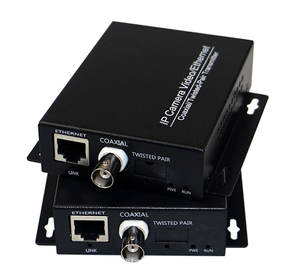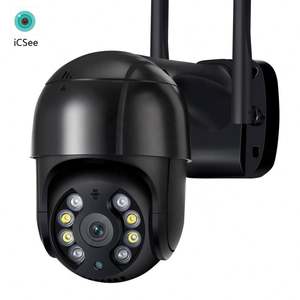Exactly How CCTV Cameras With Fiber Optic Output Enhance Long-Distance Tracking
CCTV electronic cameras geared up with fiber optic outcome stand for a substantial advancement in long-distance monitoring innovation, using unrivaled advantages over standard systems. By leveraging the properties of light transmission through fiber optics, these video cameras make sure high-def video clip top quality continues to be undamaged throughout extensive distances while effectively reducing electromagnetic interference. This development not only improves picture clearness however likewise enhances installment procedures and source allowance. As we check out the ramifications of this innovation, one should think about how these developments are reshaping the landscape of security and monitoring systems in numerous applications.

Understanding Fiber Optic Technology
Fiber optic technology is increasingly utilized in long-distance monitoring applications due to its exceptional capacity for information transmission. This modern technology uses slim strands of glass or plastic fibers to transmit data as light signals, substantially minimizing the depletion frequently related to conventional copper cables. The inherent properties of optical fiber enable the transmission of big volumes of information over significant distances without loss of top quality, making it an excellent selection for applications needing dependable interaction.
The concept of overall inner representation helps with the reliable transmission of light within the fiber, making certain high data transfer and rate. Unlike electrical signals in metal cables, optical fiber are immune to electro-magnetic interference, boosting the stability of information transmission. This characteristic is specifically important in settings with high levels of electrical sound, such as industrial setups or metropolitan locations.
Additionally, fiber optic wires are lighter and much more adaptable than their copper counterparts, which streamlines installation and minimizes structural lots. With their sturdiness and resistance to ecological aspects, fiber optics are appropriate for outdoor applications, consequently expanding the reach of keeping an eye on systems. Consequently, fiber optic innovation is coming to be a cornerstone in contemporary security services, successfully resolving the challenges of long-distance tracking.
Advantages of Fiber Optic CCTV
Making use of fiber optic technology in CCTV systems uses countless advantages that enhance surveillance abilities. Among the primary benefits is the capability to send high-def video over long ranges without substantial signal destruction. Unlike traditional copper cable televisions, fiber optics can preserve video clip top quality over extensive runs, making them optimal for huge properties or remote monitoring locations.
Additionally, fiber optic cable televisions are less at risk to electro-magnetic disturbance, which can misshape signals in conventional systems. This guarantees clearer photos and nonstop solution, critical for protection monitoring. Additionally, fiber optics are inherently extra safe and secure, as obstructing signals needs specialized equipment, thus giving an additional layer of security versus unapproved accessibility.
The lightweight and small nature of fiber optic cords also streamlines setup, making it possible for less complicated directing through tight spaces and reducing general labor costs. Their durability makes them resistant to environmental variables such as wetness and temperature level changes, extending the life-span of the surveillance system.
Last but not least, fiber optic systems can sustain a better number of electronic cameras on a single network, optimizing resources and supplying scalability for future development. These benefits make fiber optic CCTV systems a premium option for modern monitoring demands.
Contrast With Typical Equipments
When contrasting CCTV systems, standard configurations typically drop brief in several useful reference essential locations, especially in regards to range and signal honesty. Conventional coax systems normally face considerable signal destruction over fars away, restricting reliable monitoring ranges to about 300 feet (cctv fibre optic cable). Yet threshold, picture quality lessens, resulting in prospective unseen areas and reduced surveillance efficiency
In comparison, fiber optic systems keep signal honesty over a lot greater distances, typically going beyond numerous miles without loss of top quality. This is largely due to their ability to transfer data as light signals, which are less vulnerable to electro-magnetic disturbance than electric signals utilized in standard systems.
In addition, typical systems call for extra extensive upkeep and troubleshooting as a result of their susceptability to ecological variables such as dampness and electro-magnetic sound. Fiber optic systems, on the other hand, offer boosted sturdiness and lower maintenance costs, as they are less vulnerable to damages.
Applications in Long-Distance Tracking
The advantages of modern CCTV systems in maintaining signal honesty over fars away open up a wide variety of applications for long-distance surveillance. One substantial application remains in urban surveillance, where districts release fiber optic CCTV systems to keep an eye on public spaces, enhancing safety and security and preventing criminal activity. These systems provide continual, top notch video feeds that are critical for reliable police and emergency response.
An additional crucial application is in commercial settings, where remote surveillance of producing processes and unsafe areas is essential. Fiber optic CCTV can hold up against severe environments and transfer data over long ranges without loss of quality, enabling real-time oversight and lessening risks to workers.
Furthermore, critical facilities such as airports, railways, and pipes profit from long-distance CCTV tracking. Safety and security teams can manage huge areas from streamlined control areas, ensuring rapid action to any kind of incidents.
Furthermore, in farming settings, farmers use long-distance CCTV to check crops and livestock, assisting to improve performance and security. In general, the flexibility and dependability of fiber optic CCTV systems make them crucial throughout various sectors, allowing detailed monitoring options customized to details demands.
Future Fads in Security Technology
How will developments in technology reshape the landscape of surveillance? The future of surveillance technology look at this now is poised for significant transformation, driven by innovations such as expert system (AI), machine learning, and side computer. These innovations allow real-time data analysis, enabling quick recognition of prospective risks and enhanced situational awareness.
AI-powered analytics will certainly enhance the accuracy of facial recognition systems, straight from the source decreasing false positives and enabling extra efficient tracking of people. Additionally, the assimilation of Web of Things (IoT) tools will certainly assist in a seamless network of interconnected security systems, boosting tracking capabilities throughout large locations.
An additional trend is the change towards cloud-based storage space services, which supply scalable data monitoring and availability. This will certainly allow companies to store substantial amounts of video clip data without the restrictions of physical storage space, while guaranteeing that details is quickly retrievable.

Final Thought
In final thought, CCTV cams outfitted with fiber optic output represent a considerable improvement in long-distance surveillance capacities. As security technology continues to evolve, the adoption of fiber optic services will likely play a critical function in improving protection throughout varied applications.